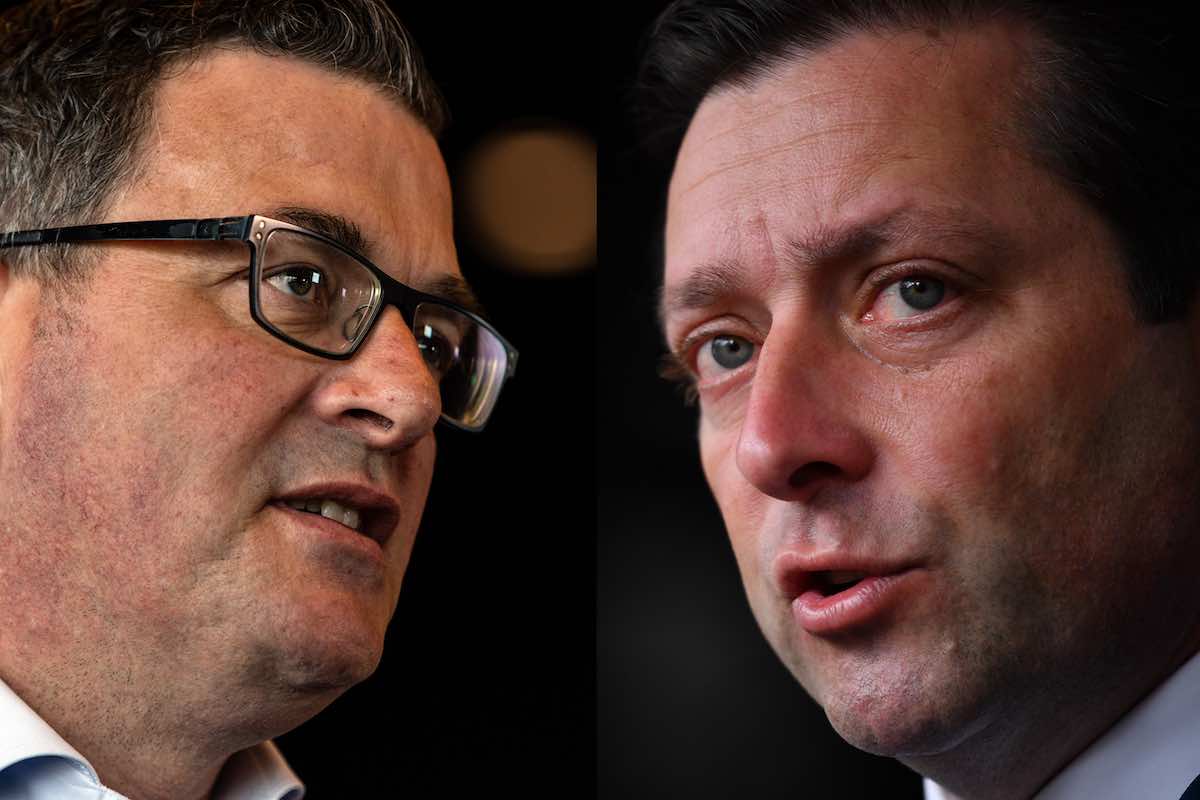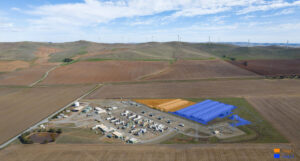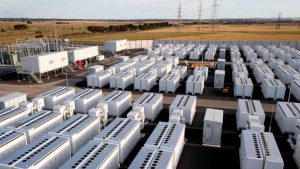After a long and grubby campaign, Victoria’s state election finally takes place this weekend. With the global energy market still in crisis and soaring prices starting to hit hip pockets, energy has been a big part of the pitch from the three major parties. So what are they offering?
Below we look at the policies that Labor, the Liberal and Nationals coalition and the Victorian Greens are – and are not – promising on home solar, storage and efficiency; electric vehicles; renewable energy; large-scale and long duration energy storage; emissions reduction; the exit from coal, and; general market reforms.
It’s a mixed bag, ranging from state-owned energy utilities, to cheaper solar and batteries for everyone, all the way to stockpiling gas.
But as Environment Victoria’s Jono La Nauze has noted, this election campaign’s energy policies – with the notable exception of the Coalition’s gas “thought bubble” – mark a “huge shift” from just a few years ago.
“[This] shows how community pressure for action on climate has changed the political debate in Victoria on all sides of politics,” La Nauze says.
“With so many independent and teal candidates also making stronger climate policies a centrepiece of their election pitch, it’s clear the next Victorian government will have a strong mandate to slash pollution this decade, whoever wins office.”
A close contest
According to the polls, it’s going to be a close one, with The Age reporting a narrowing of the gap between the major parties this week, with Labor ahead of the Coalition 53 to 47 per cent on two-party preferred terms.
According to that Resolve poll, primary votes at the start of this week were 36% Labor (down two), 36% Coalition (up five), 10% Greens (down two), 6% independents (down six) and 12% others (up six).
One of the biggest threats to Labor’s chances of re-election is the rising popularity of independents in Melbourne’s outer-west and south-west.
As ABC political reporter David Speers explains here, these aren’t the “teal” candidates that disrupted the federal election with a focus on climate change and integrity. Rather, they are tapping into “highly local issues.”
Speers says the Greens are also likely to flex their muscle this election, potentially doubling their numbers in the Victorian parliament from three seats to six.
Let’s take a look at the policies…
Home solar, batteries and energy efficiency
Labor:
The Andrews government has, since 2018, been running its highly successful Solar Homes program, offering rebates and zero interest loans for rooftop solar – currently up to $1,400 off the price of a rooftop PV system – for homeowners with existing homes, homes under construction and rental properties.
Home battery rebates of up to $2,950 are also available, as are subsidies for solar hot water, heat pumps and for retrofits to swap out old gas appliances with new, more efficient electric appliances such as air conditioners, as part of the separate Victorian Energy Upgrades scheme.
Earlier this year, Labor unveiled its Gas Substitution Roadmap, outlining the start of a shift from the use of gas, removing the obligation of new homes to connect to the gas network and paving the way for all electric homes.
Coalition:
The Coalition proposes to match the current Labor policy for home solar and battery storage, with a couple of differences.
Its Power to the People Plan proposes to support one million Victorian households to install solar and batteries by 2035 with rebates of up to $4,400 for owner occupiers.
One key positive difference is that households will be able to access both a rebate of up to $1,400 for solar panels and $3,000 for a home battery.
Further, at least 100,000 rental households will get access to a double rebate to work with landlords to install solar and batteries by 2035 (up to $8,800 in total).
The Coalition also says it will work to add solar panels across public infrastructure, leading with government schools and social housing.
Greens:
The Greens’ focus here is on solar and batteries for public housing, and ensuring renters and people in apartments can access solar through shared “solar gardens.”
For households, the Greens also plan to get 1 million Victorian homes off gas and introduce a ban on connecting new homes to the gas network.
Electric vehicles
Labor:
The Andrews government has in place a $100 million package to drive EV uptake, including $46 million for Australia’s first public Zero Emissions Vehicle Subsidy Program. This provided 20,000 subsidies of $3,000 at the point of purchase for ZEVs worth no more than $69,000.
Another $19 million is dedicated to the roll-out of electric vehicle (EV) charging infrastructure across regional Victoria and to support EV fleets. For public transport, there’s $20 million for a ZEV bus trial and a target for all public transport bus purchases to be ZEVs from 2025.
Another $10 million is being used to replace 400 vehicles in the state government fleet with ZEVs, while $5 million is dedicated to the establishment of a Commercial Sector Zero Emissions Vehicle Innovation Fund, and $298,000 for an ‘EV-readiness’ in new buildings study.
On the less positive side, Victorian Labor has also introduced a per kilometre tax on electric vehicles and plug in hybrids that charges 2.5c/km, and 2c/km for plug-in hybrids.
This has been wildly unpopular across the board for the timing of its introduction when EV uptake is still in its infancy, and while EVs remain prohibitively expensive. It even faces a legal challenge.
Coalition:
Victoria’s Liberals and Nationals are promising to pause the aforementioned distance-based charge for electric vehicles until 2027, at a cost of $82 million, and spend $50 million establishing 600 new electric vehicle charging stations across the state.
The Greens:
The Victorian Greens would go one step further than the Coalition and scrap Labor’s EV tax completely. They also propose to introduce a $10,000 eco-bonus for the purchase of an electric vehicle under $77,565, and abolish Stamp Duty for those cars, too.
The Greens also propose free vehicle registration for EVs, saving drivers more than $700 a year.
The party wants to see Australian-made electric buses (3,000), and to buy at least 5,000 electric vehicles for the government fleet to grow the second-hand market.
On charging, the Greens propose accelerating the rollout of charging stations across Victoria, including at every metropolitan and regional train station car park. “Right to Charge” laws are also proposed, to give renters the right to install a charging station in their residential parking space; and in new developments, Electric Vehicle readiness laws would requiring all parking spaces to be EV ready.
A subsidy for bi-directional chargers has also been proposed, to enable EV users to charge their car through their solar panels while using their EV’s battery to power their homes.
Finally, the Greens would put a 2030 timeline for the end of the sale of petrol cars in the state. Neither of the two major parties have ventured into this territory yet in Victoria.
Renewable energy
Labor:
Victorian Labor jacked up its targets for renewables just last month to reach a 95 per cent share on the state’s electricity grid by 2035. It also boosted its 2030 renewables target to 65 per cent, up from 50 per cent.
The Andrews government has held two very successful renewable energy auctions, the most recent lining up 623MW of new generation capacity and 365MW/600MWh of new energy storage for the state.
Victoria has a separate target for offshore wind, announced in March, that is targeting 2GW installed by 2030, 4GW by 2035, and 9GW by 2040. Earlier this month, Andrews dished a funding boost of $40 million for three Victorian offshore wind projects. There’s also a target for energy storage – more on that below.
Coalition:
No renewable energy target from the Coalition, which is a bit of a concern considering Matthew Guy’s strident campaign against the Andrews government’s legislated VRET back in 2017.
Instead, the party is offering an emissions target (see below) and a promise to 1,800MW of renewable energy by upgrading transmission infrastructure in Western Victoria, already in motion as one of a number of essential grid expansions identified by the Australian Energy Market Operator in its Integrated System Plan.
(The federal government just announced a concessional loan of $750 million for the VNI West transmission project to ensure it is completed by 2028 and in a position to unlock some 4GW of new wind and solar projects in western Victoria.)
The Coalition also promises to establish a “Fixing Victoria’s Grid” taskforce, to partner with industry to develop a plan to modernise the transmission system to “make renewables work with a timeline to getting their work done.”
Greens:
The Greens propose to increase Victoria’s Renewable Energy Target to 100% by 2030 supported by $10 billion in new renewable energy generation, storage, and grid upgrades.
They also want to legislate a 3GW target for building offshore wind by 2030, and allocate funding to the Latrobe Valley Authority to develop Victoria’s offshore wind workforce.
Large-scale and long-duration energy storage
Labor:
The Andrews government in September announced plans to legislate a target for 2.6 gigawatts (GW) of renewable energy storage capacity by 2030, and then 6.3GW of storage by 2035, if re-elected.
The targets were accompanied by the news that Labor would will help fund two new big batteries and grid forming inverters in the state, to kick off its Australia-first plan.
Labor wants the storage targets to bring online both short and long-duration energy storage systems – including technologies that can hold more than eight hours of energy – taking in batteries, pumped hydro and hydrogen technologies.
Labor has also pledged to install 100 neighbourhood batteries across the state as part of a $42 million scheme to share the benefits of rooftop solar among households otherwise unable to access it.
Coalition:
The Liberal-Nationals have promised to establish a $1 billion Victorian Hydrogen Strategy to support the research, development and adoption of clean hydrogen technologies.
On batteries, the Coalition has also announced $100 million for community organisations to access grants of up to $1 million to solar, big batteries and ‘other supporting infrastructure.’
Greens:
The Greens propose to spend $500 million on big batteries and pumped hydro storage, centred in Victoria’s Latrobe Valley and owned by the public.
Emissions
Labor:
As it did with its renewable energy target, Labor in October boosted its emissions target for the state to a 75-80 per cent reduction in emissions by 2032, up from 50 per cent on 2005 levels by 2030. It has also set a goal for net zero by 2045, five years ahead of most of the rest of the country – and world.
Coalition:
Libs and Nats propose writing into law an emission reduction of 50 per cent by 2030, which Matthew Guy says
“will send the strongest possible signal that action on climate change is a priority.”
Greens:
The Greens want to target a reduction in Victoria’s greenhouse gas emissions of 80% by 2030 and net zero by 2035 “or sooner.”
Coal exit
Labor:
Labor hasn’t set a date for the phase-out of coal power in the state, per se, but it has been argued that the newly boosted renewable energy and emissions targets (see above) do the same job, effectively setting a closure date of 2035.
“Our government is not just going to sit around and wait for [coal power generators] to … announce their decisions when the loss is at our end,” said Labor energy minister Lily D’Ambrosio in an interview with RenewEconomy’s Energy Insiders podcast last month, after the new targets were announced.
Coalition:
Beyond its plans for 50% emissions reduction by 2030, the Liberal and National parties in Victoria don’t seem to have much of a plan for the retirement of the state’s remaining coal plants.
It’s worth noting, however, that in 2017, Matthew Guy described the closure of Hazelwood as a “dark day” in the state’s history and vowed to ensure that Loy Yang and Yallourn stayed open on his watch.
“I will not allow our coal resources to be wasted, I will not allow such economic advantages to Victoria to be kept in the ground for the sake of ideology,” he said in 2017.
Greens:
The Vic Greens in August introduced an Energy Legislation Amendment Bill with a timeline for coal plant closures between now and 2030. 2030 is also proposed as an end date for coal mining in the state.
The Bill would bring the closure of Yallourn forward to 2024 (previously 2028), Loy Yang A to 2027 (previously 2040 – 2045) and Loy Yang B to 2030 (previously 2046).
To support coal communities, the party would also institute a “job-for-job guarantee” for coal workers and secure funding for the Independent Latrobe Valley Authority to oversee the development of new industries for the region.
Market reform
Labor:
At the end of October, Labor revealed plans to invest “at least” $20 million to revive the publicly owned State Electricity Commission, a generation (and possibly retail) utility that would be headquartered in the Latrobe Valley to give the state’s coal centre a key role in the clean energy future.
Under its proposed 10-year plan, Labor says it will hold a controlling interest an initial rollout of 4.5GW of new zero emissions power generation – enough to replace the Loy Yang A coal plant.
Via the SEC, these renewables projects will be 51% owned by the Victorian taxpayer, with super funds preferred as an investment partner for the other 49%.
On power prices, Vic Labor in July re-booted its Power Saving Bonus program, which offers a one-off $250 payment for Victorian households if they go online to compare energy offers.
Coalition:
The Coalition’s answer to energy market mayhem the state – along with the rest of the National Electricity Market states – is to stockpile Victorian gas.
It wants to legislate a 100 per cent domestic reservation policy on all new conventional onshore gas – meaning that 100 per cent of new natural gas supplies will be reserved for Victorian homes and businesses, a move it says will make energy supply “more reliable and more affordable” for all.
Labor and the greens – and many, many others – have criticised this policy, in part for being backwards looking and not compatible with the state’s renewables and emissions goals.
But while the Andrews government has banned fracking – or unconventional onshore gas – it’s worth noting that in 2020 it supported “an open and orderly restart of the onshore conventional gas industry,” with passage of the Petroleum Legislation Amendment Bill.
For more immediate consumer relief from power price hikes, the Coalition is offering up a $235 energy Bill Buster that will nix the daily fixed “supply charge” paid by households for an initial period of six months, starting on day one of 2023.
Greens:
The Greens also want to start up a publicly owned energy utility, in this case a retailer called Power Victoria that the party says will save Victorians at least $320 on their annual power bills. It also wants to fund publicly-owned renewables, publicly-owned energy storage, and publicly-owned upgrades to the transmission network.










